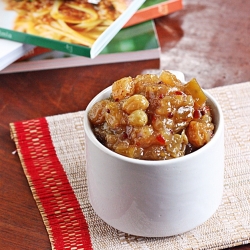Today I’m going to look at two crucial ways that Ayurveda can help to bring healthy children into the world. One involves improving fertility; the other involves promoting the healthy brain health of fetuses and babies.
Falling sperm count is a serious modern problem. Back in the 1990s, Danish researchers reported “a genuine decline in semen quality over the past 50 years”, with possible implications for male fertility.
Numerous studies have linked this phenomenon to BPA, a chemical found in many plastics used to make food containers, bottles and coatings in tin cans. It is also commonly used in thermal paper in cash register receipts. Researchers claim BPA can disrupt hormones, raising the risk of a wide number of health problems such as diabetes, obesity and cancer — and disrupted sperm production. A recent Washington State University study indicated that the chemical “disrupts the delicate DNA interactions needed to create sperm.” BPA also has the potential to harm infants and the fetus. The chemical has already been banned in baby bottles in Europe because of safety fears.
The second and equally disturbing concern is the high “body burden” of toxins carried by women of childbearing age: toxins that can harm the brain development of fetuses and babies.
While the commitment to organic food and natural materials is steadily increasing around the world, we are still faced with the legacy of industrialization: a level of toxic exposure that has serious implications for future generations. Studies have focused on the three pollutants (lead, mercury and PCBs) because they are especially pervasive and persistent in the environment. Scientists identified specific risk factors to fetal and infant brain development for children of women with higher blood levels of these chemicals.
And studies show that as women grow older, the blood levels of chemical toxins increase exponentially. Women aged 30 – 39 had a 12 times greater risk and women aged 40 to 49 had a risk 30 times great than women aged 16 – 19.
The reason that risk increases with age is because the toxins accumulate in body over time. PCBs and BPA are fat-soluble chemicals. They bind to the fatty lipid layer that surrounds every cell in the body. This is where the ancient detoxification treatments of Ayurveda provide unique benefits.
In a study published in Alternative Therapies in Health and Medicine in its September/October 2002 issue have shown that Maharishi Ayurveda Panchakarma therapy offered at The Raj, Ayurveda Health Spa greatly reduces the levels of 14 important ˜lipophilic’ (i.e. fat-soluble) toxic and carcinogenic chemicals in the body, which would otherwise remain in the body for a very long time. Studies founded by the National Institute of Health and conducted by Maharishi University have shown that person’s receiving Panchakarma treatments had a 70% reduction of heavy metals, pesticides and other hazardous chemicals than the general population.
These are the only treatments that have been proven to reduce the levels of fat-soluble toxins in the body.
For both women and men considering parenthood, a serious commitment to reducing the levels of toxins would be considered at least three months before trying to conceive a child.
The Raj offers a pre-conception and infirtility program that includes individualized treatments, diet, life-style recommendations and herbal preparations. For more information, visit The Raj Ayurveda Health Spa website:






